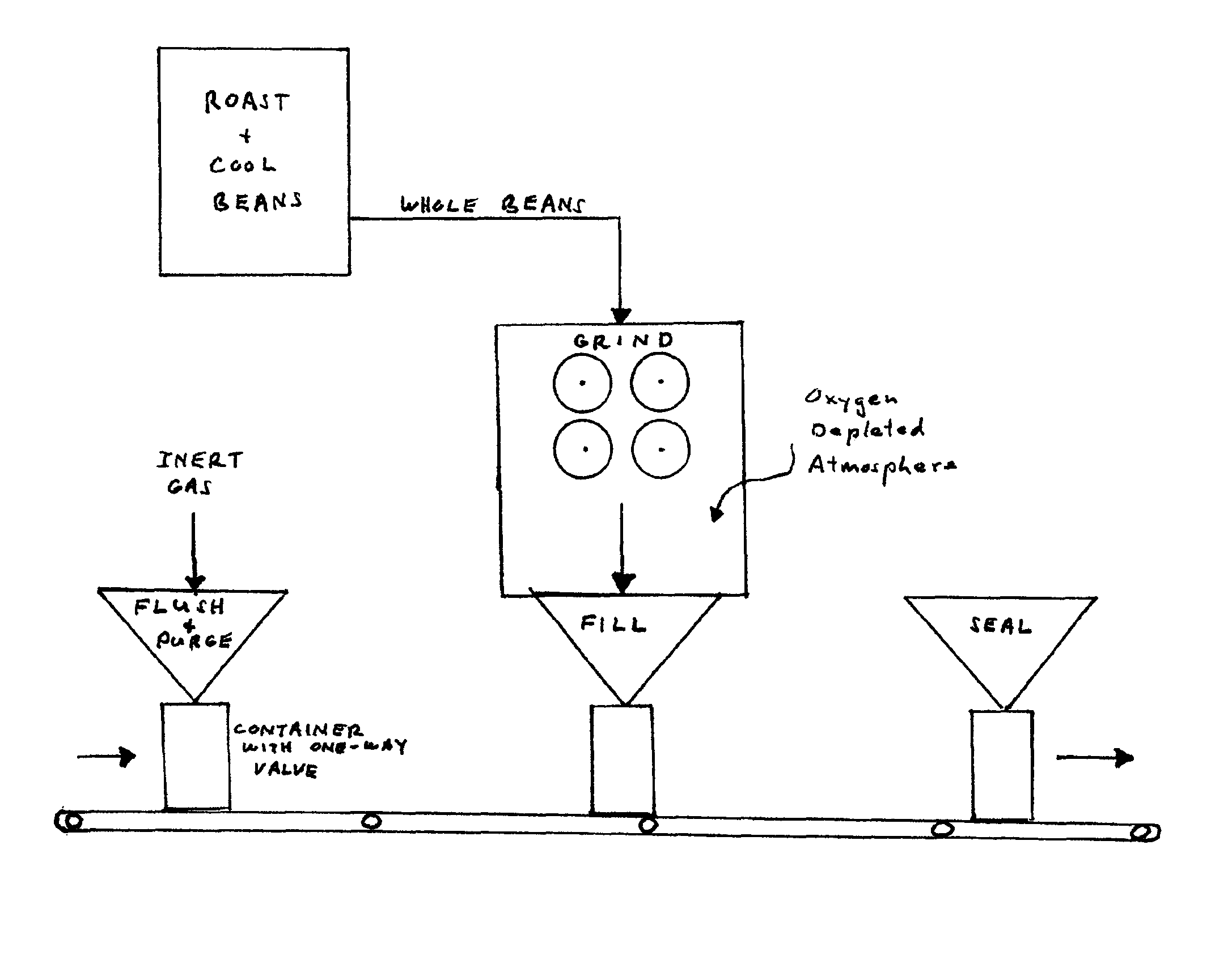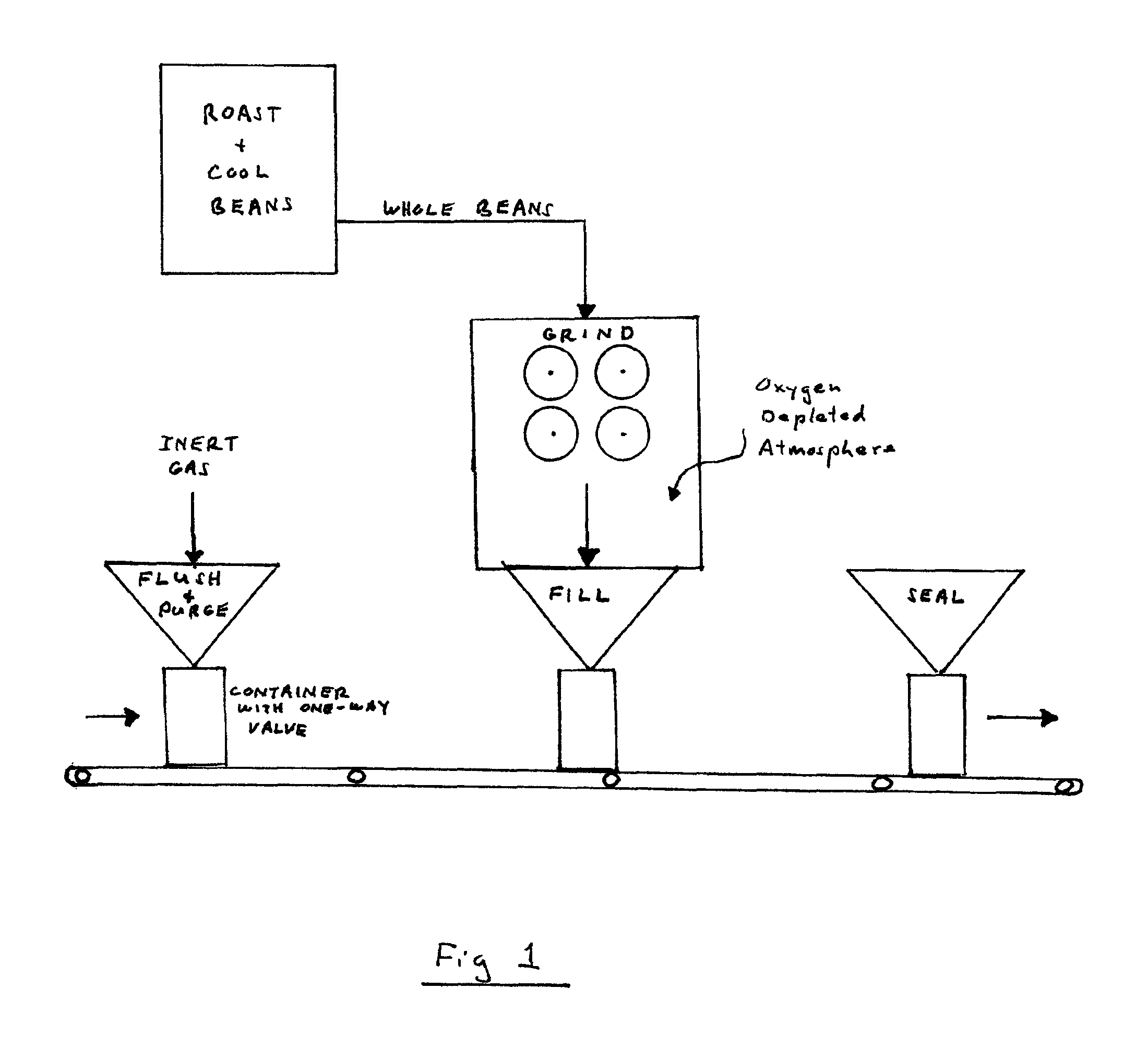Method of processing roasted coffee
a technology of roasted coffee and processing method, which is applied in the field of processing method of roasted coffee, can solve the problems of unfavorable packaging materials, unfavorable packaging materials, and unfavorable packaging materials, and achieves the effects of minimizing moisture absorption, maximizing the retention of volatile aromatics, and minimizing oxidation
- Summary
- Abstract
- Description
- Claims
- Application Information
AI Technical Summary
Benefits of technology
Problems solved by technology
Method used
Image
Examples
Embodiment Construction
The present invention may be embodied in a number of different forms. However, the specification and drawings that follow describe and disclose only some of the specific forms of the invention and are not intended to limit the scope of the invention as defined in the claims that follow herein.
According to the method of the present invention, one or more containers are prepared for receiving and packaging coffee therein. Depending upon the end use of the packaged coffee, shipping requirements, retail display considerations and other factors, it will be appreciated that a wide variety of different containers or packages may be utilized. For example, the containers may be of a rigid variety formed from metallic alloys, cellulose products, and / or plastics or other synthetic materials. Similarly, the containers may also be of a flexible or semi-rigid variety, including pre-formed synthetic bags, or bags made from cellulose or other textile materials coated for gas impermeability. In othe...
PUM
 Login to View More
Login to View More Abstract
Description
Claims
Application Information
 Login to View More
Login to View More - R&D
- Intellectual Property
- Life Sciences
- Materials
- Tech Scout
- Unparalleled Data Quality
- Higher Quality Content
- 60% Fewer Hallucinations
Browse by: Latest US Patents, China's latest patents, Technical Efficacy Thesaurus, Application Domain, Technology Topic, Popular Technical Reports.
© 2025 PatSnap. All rights reserved.Legal|Privacy policy|Modern Slavery Act Transparency Statement|Sitemap|About US| Contact US: help@patsnap.com


